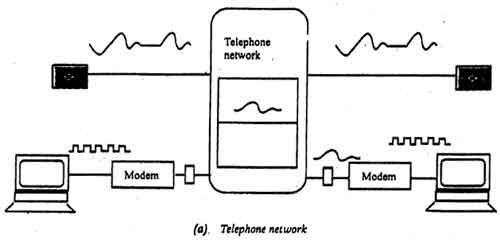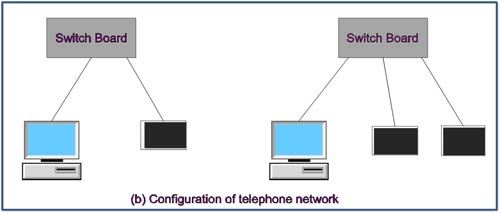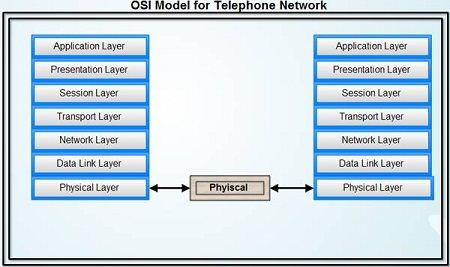The earliest electronic network is the telephone system. This telephone network commonly uses analog technology that was quite different from digital technology used in the computer-based networks. The advantages of digital technology over the analog technology in terms of economics and services forced the telephone industry to move rapidly to install fiber and digital networks.
The telephone network transmits analog signals and hence a modem is required whenever a computer or terminal is connected to the telephone line. The modem then converts digital data from a computer to an analog signal that can be transmitted via a telecommunication line and converts the analog signal received to computer data.
We’ll be covering the following topics in this tutorial:
Dial up Telephone Networks
The telephone network consists of the subscriber’s line, switchboards, and trunk lines. Each subscriber line has an address, i.e. telephone number. When a caller transmits a dial signal to the switchboard, the switchboard connects the caller’s subscriber line to that of the receiver, enabling communication. The trunk line between the caller and the receiver is occupied until either discontinues the communication.
When the telephone system is to connect with a network, it becomes necessary to dial the telephone number to select the target device on the network. A device called Network Control Unit (NCU) performs this, and most of the available modems, include this NCU.


Leased Line
A computer can be connected permanently to the Internet using leased lines in addition to a modem and router. These lines are based on speed of the connection, installation cost, and recurring monthly charges.
An example of usage of leased line is a system in which only one terminal is connected to the host computer. Though multiple computers/terminals using multiplexing can be connected to one system via a single leased line. It uses FDM for an analog leased line or TDM method for digital leased line. DSU (Digital Service Unit) unit is used instead of modem for digital line. Leased lines may also be used to Connect LANs.

Telephone networks are intended to transmit analog signals. It uses layer 1 (physical layer) of .the OSI model. It is the service to provide physical media. Therefore, telephone networks can carry any type of protocol data. The data transmission speed depends on the performance of the modem and quality of the line.

Advantages and Disadvantages of Telephone Networks
Advantages
1. It is circuit-switching network, therefore, any receiver can be selected and’ there is virtually no transmission delay.
2. As it is widely spread therefore it is available at a low price.
Disadvantages
1. It requires a long time for connection. A dial-up operation is necessary before the line can be connected to the receiver. This dial-up time is too long to use in data communication systems.
2. It has low transmission speed.
3. The line quality is not sufficient for data transmission, and is therefore, not appropriate for high speed data transmission because telephone lines were originally developed for audio communication.
The Computer Communication System-An Example
The computer communication system is an example of a system using the telephone network .The system is used to send and receive mail, connection to Internet, if the account is TCP/IP, post messages on a Bulletin Board system by accessing the host computer system of an ISP through telephone network.

 Dinesh Thakur holds an B.C.A, MCDBA, MCSD certifications. Dinesh authors the hugely popular
Dinesh Thakur holds an B.C.A, MCDBA, MCSD certifications. Dinesh authors the hugely popular